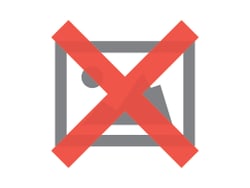REDWOOD LOGIN
Redwood PortalLTL
SCS
SCS Support
Rockfarm
Managing your inbound logistics with an inbound logistics program can help ensure you’re getting cost-effective rates from vendors and that your warehouse and inventory is managed as efficiently as possible.
As a shipper, chances are you have a far better grasp on the data surrounding your outbound freight than on inbound shipments from various vendors you purchase materials from. After all, shipping out freight to customers and ensuring that process runs smoothly and effectively is of supreme importance to overall customer satisfaction, and as we know, customers keep the bills paid and helps your company grow.
However, continuing to focus all resources on outbound shipping can lead to missed opportunities to make receiving inbound freight a more predictable and economical process. We know that managing inbound freight can be tricky—that’s why so many companies don’t make it a priority in their tracking of supply chain data. That’s also why you can’t undervalue the importance of having an inbound logistics program to help you accurately track inbound shipments from your suppliers, and regulate the cost.
While there are many reasons to have an inbound logistics program, these five are vital to helping your business have true operational excellence.

If you allow your suppliers to have total control over inbound freight costs you could be overpaying for those shipments without knowing it. If you’re not actively tracking data on inbound shipments then you could be missing out on discounted freight rates. For example, a supplier who has negotiated a low rate with a carrier may charge you a different amount—pocketing the savings for themselves instead of giving you the same price break. Alternatively, your vendor may not be getting great rates from the carriers, and with your combined freight, it’s possible that you could negotiate better pricing on your own behalf.
An inbound logistics program can help you break down and track the cost of your materials so that you have greater visibility on the actual cost of the freight instead of an estimated cost that could be wildly off the mark. This data can help you negotiate freight charges with vendors and give insight that allows you to request lower-cost shipping options, such as backhaul shipping and freight consolidation.
How much do you know about the materials you receive on a regular basis? Do you know expected lead times for receiving high-priority items? Are your supplier's shipping orders complete or do you have frequent back orders? An inbound logistics program can make tracking this data more easily. When you have greater knowledge about your inbound freight you can optimize your supply chain from the top down. You’ll have clearer estimates of when materials will arrive, a better understanding of the safety stock needed in case of unavoidable delays or back orders, less time between the ordering of product and moving it through your inventory, and less over or under stocking of items. This, in turn, contributes to greater efficiency of shipping outbound freight, helping keep costs and resource use to a minimum.

Once you begin using an inbound logistics program you’ll have access to real-time notifications about shipments coming from suppliers to make sure you can effectively handle any issues that may arise. You’ll also receive regular updates on a shipment's status so that uncertainty about a shipment is nearly eliminated. This will allow you to proactively handle problems by pulling from your safe stock, reaching out to another supplier, etc. Without notifications like the ones provided with an inbound logistics program more often than not you could find yourself scrambling to come up with even a passable solution. That’s a predicament no business wants to be in.
Getting outbound freight to customers begins with having the materials you need to manufacture the products your customers purchase from you. So, if you’re using an inbound logistics program to manage your inbound freight more effectively the benefits you receive from that will also trickle down to your customers. Cost savings you receive from lower freight charges can translate to lower costs for your customers. Better managed inventory will mean that you’ll be better positioned to ship product to customers fully, correctly and on time. All this leads to happier customers who will help you stand out as a leader in your industry and continue to grow your business, allowing you to reduce your costs even more.
While there are safeguards in place to help ensure that suppliers comply with inbound logistics vendor regulations, some will inevitably slip through the cracks, meaning your business could be at risk for unfair vendor practices that cost you money and leave you unable to control your inbound freight. An inbound logistics program that has a vendor module can provide you with a way to have better control over inbound freight by requiring vendors to connect with your inbound logistics program and provide accurate and detailed information about the freight they’re shipping to you. This helps hold them accountable to industry standards and ensures that you’re not being taken advantage of.
When it comes to managing your supply chain it’s in the best interest of your business to make both outbound and inbound logistics a priority. By covering both ends of the supply chain you’ll be able to keep your costs as low as possible while providing the best service to your customers.
LTX Solutions specializes in all things LTL, covering both your inbound and outbound freight to ensure the lowest cost and most simple processes. So tell us—are you ready to start your search for an inbound logistics program? If the answer is yes, contact us today!
